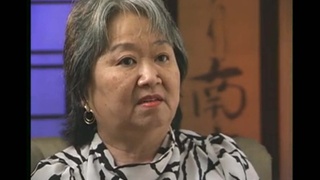Interviews
Dusty Weather at Topaz, Utah
Now, San Franciscans are used to very mild weather. You know, we never really have an extreme summer of any sort. Nor do we have any kind of winter. No snow and whatever. So when we went to camp, we were dressed in our San Francisco type clothes.
So it was winter when we, no, I’m sorry, it was summer when we arrived at Topaz. And it was alkaline dust blowing, and in the distance, we could see rows of black tar papered barracks as we approached. And I looked over to my grandfather who was dressed in a fedora and a black overcoat. He had on a three piece suit with a vest, all black. And by the time we got to camp, it was all white. It was just covered with alkaline dust.
And as the dust whipped up, we suddenly realized, oh my gosh. We have to get indoors. So we rushed to our assigned barrack, went in, and it was equally as bad inside as it was out. Because it was just tar paper and very little insulation. So we opened up the window to try to get some fresh air. And of course, all that dust came blowing in. So it was a miserable first encounter of camp.
Date: August 26, 2015
Location: California, US
Interviewer: John Esaki
Contributed by: Watase Media Arts Center, Japanese American National Museum






